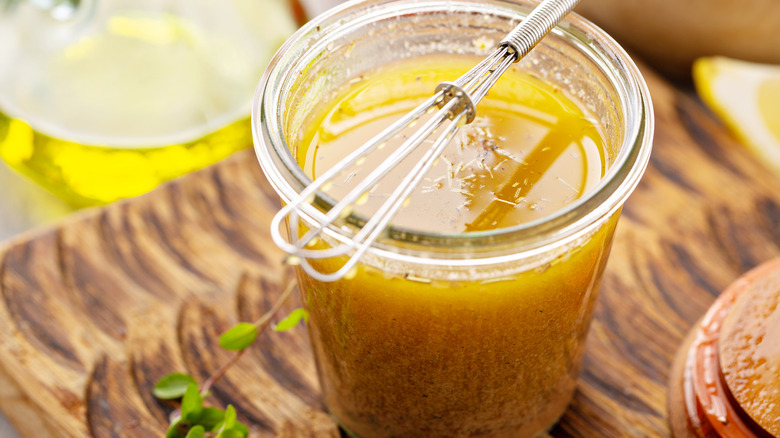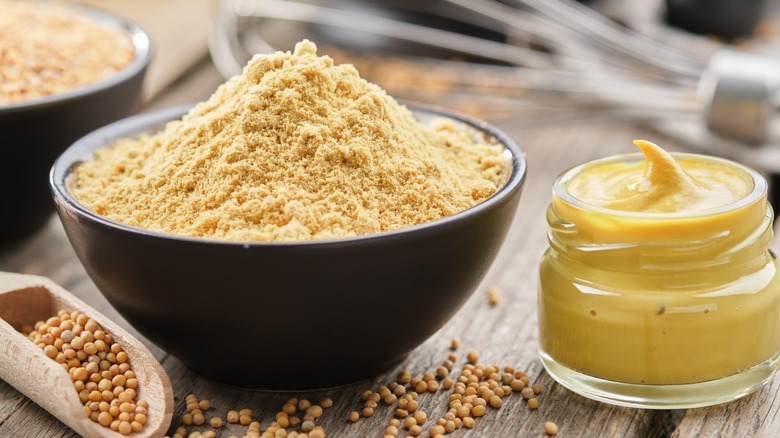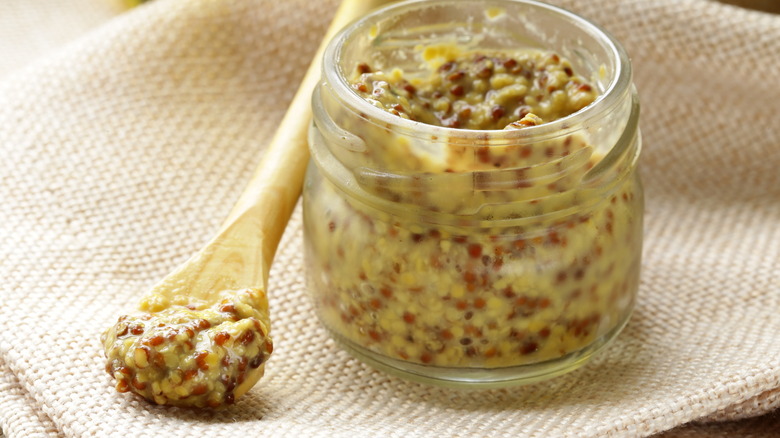The Mustards You'll Want To Avoid When Mixing Vinaigrette
When it comes to enjoying a salad, nothing brings people together more than a condiment. A great salad dressing either makes or breaks the dish. But did you know the type of mustard used in salad dressing can decide whether it's a restaurant-grade dish or a major flop? It's true, mustard is a common ingredient in many vinaigrettes. Its popularity is not just because of its flavor, but because of its natural ability to really pull the salad's ingredients together — literally.
Besides its natural punch of flavor, it acts as an emulsifier, which helps two unstable ingredients (in this case, oil and vinegar), bond together and combines into a silky, homogenous dressing that won't separate as easily as oil and vinegar alone. Anyone who's ever poured dressing onto a salad and gotten a ton of oil and hardly any acid or vinegar knows why mustard is a big deal.
The Emulsifier Effect
Sure, one could use mayonnaise (another emulsifier), but then the dressing would miss out on a mouth-watering pop of flavor since compared to mustard, mayonnaise is a much more subtle flavor. This is where the mustard comes into play. That said, not all mustard is created equal. The stuff that works well on a Cuban sandwich or an In-N-Out Animal-Style burger doesn't make the cut for a subtle, elegant salad dressing.
To know which mustard to choose (and to avoid), here's a tiny mustard 101. At its most basic, mustard is a plant. Where it takes the leap from vegetation to the hot dog (don't even bring up ketchup on a hot dog to anybody from Carmy to Barack Obama), is when the plant's seeds (which range from pale and mild to dark and quite spicy) are ground and mixed with a liquid (like vinegar or water) and other flavorings.
Go Against the (Coarse) Grain
As Serious Eats explains, the more acidic the liquid used, the more long-lasting and slow the signature mustardy punch of flavor is, versus a really bracing punch of flavor upfront. That's why, depending on the mustard used, just a bit goes a long way in a vinaigrette — shake it and watch the dressing come together in a snap. However, it's not just the flavor of mustard that will affect a vinaigrette — it's the actual texture. Food & Wine explains that coarsely ground mustard, like whole grain, won't work as well as the more blended stuff. Sure the taste will be there, but a huge part of the reason to use mustard in a vinaigrette is to get that creamy texture and silky mouthfeel.
Stick to Dijon for a classic vinaigrette, though honey mustard is also a popular choice for a sweeter pop of flavor. Just keep the coarsely ground mustard for the charcuterie boards.


